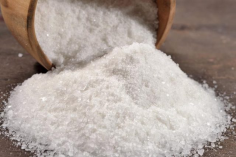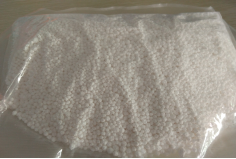0086-371-67986516
Calcium Chloride Applications
Calcium chloride (chemical formula cacl2) is the ionic compound of calcium and chlorine. it is a salt that behaves as a typical ionic halide, being solid at room temperature and highly soluble in water. common applications include brine for refrigeration plants, ice and dust control on roads, and desiccation. because of its hygroscopic nature, attracting and holding water, anhydrouscalcium chloride must be kept in airtight containers.
Calcium Chloride main types:
calcium chloride dihydrate ,industry grade,70% solid,
calcium chloride dihydrate, industry grade,74%-77% flake,granular,powder;
calcium chloride anhydrous,industry grade,94%-96% ,granular,pellets;
calcium chloride anhydrous,food grade,,93%min prills;
calcium chloride dihydrate,,food grade,74%min flake;
calcium chloride, Pharmaceutical Grade,dihydrate;  Main Usages:
Main Usages:
Desiccant
Calcium chloride desiccant has the high absroption capacity, the absorption capacity can lasting for 60 days, the moisture rate up to its own weight 200% (RH≥90%). It will change into gel directly after adsorbing the moisture.Held the moisture in the desiccant bag and low down the relative humidity effectively of the sealed package.
Drying tubes and dessicant sac are frequently packed with calcium chloride anhydrous prills. Also used in salt/chemical-based dehumidifiers in domestic and other environments to adsorb dampness/moisture from the air.
Anhydrous calcium chloride has been approved by the FDA as a packaging aid to ensure dryness. non-toxic, odorless and tastless, non-corrosiveness, green initiative, can be used in foodstuff, harmless to human body.
Road surfacing

Calcium chloride was sprayed on this road to prevent weathering, giving it a wet appearance even in dry weather.These hygroscopic properties are also applied to keep a liquid layer on the surface of dirt roads, which holds dust down. This keeps the finer dust particles on the road, providing a cushioning layer.
Deicing and freezing point depression

Calcium chloride is widely used to prevent ice formation and to deice,by depressing the freezing point of water. This is particularly useful on road surfaces. Calcium chloride dissolution is exothermic, and the compound is relatively harmless to plants and soil; It is also more effective at lower temperatures than sodium chloride. When distributed for this use, it usually takes the form of small, white balls a few millimeters in diameter, called prills . Solutions of calcium chloride can prevent freezing at temperature as low as −52 °C (−62 °F), making it ideal for filling agricultural implement tires as a liquid ballast, aiding traction in cold climates.
Swimming pools and aquariums

Calcium chloride is used in swimming pool water as a pH buffer and to adjust the calcium hardness of the water.This reduces the erosion of the concrete in the pool. By Le Chatelier's principle and the common ion effect, increasing the concentration of calcium in the water will reduce the dissolution of calcium compounds essential to the structure of concrete.In marine aquariums, calcium chloride is added to introduce bioavailable calcium for calcium carbonate-shelled animals such as mollusks and some cnidarians. Calcium hydroxide (kalkwasser mix) or a calcium reactor can also be used to introduce calcium; however, calcium chloride addition is the fastest method and has minimal impact on pH.

As an ingredient, it is listed as a permitted food additive in the European Union for use as a sequestrant and firming agent with the E number E509. It is considered as generally recognized as safe (GRAS) by the U.S. Food and Drug Administration.

As a firming agent, calcium chloride is used in canned vegetables, in firming soybean curds into tofu and in producing a caviar substitute from vegetable or fruit juices. It is commonly used as an electrolyte in sports drinks and other beverages, including bottled water. The extremely salty taste of calcium chloride is used to flavor pickles while not increasing the food's sodium content. Calcium chloride's freezing-point depression properties are used to slow the freezing of the caramel in caramel-filled chocolate bars.
In brewing beer, calcium chloride is sometimes used to correct mineral deficiencies in the brewing water. It affects flavor and chemical reactions during the brewing process, and can also affect yeast function during fermentation.
In cheesemaking, calcium chloride is sometimes added to processed (pasteurized/homogenized) milk to restore the natural balance between calcium and protein in casein for the purposes of making cheeses, such as brie and Stilton. By adding calcium chloride to the milk before adding the coagulant, calcium levels are restored. Also, it is frequently added to sliced apples to maintain texture.
Calcium chloride pharm grade can be used to treat magnesium intoxication. Calcium chloride injection may antagonize cardiac toxicity as measured by electrocardiogram. It can help to protect the myocardium from dangerously high levels of serum potassium in hyperkalemia. Calcium chloride can be used to quickly treat calcium channel blocker toxicity, from the side effects of drugs such as diltiazem (Cardizem) — helping avoid potential heart attacks.
Aqueous calcium chloride is used in genetic transformation of cells by increasing the cell membrane permeability, inducing competence for DNA uptake (allowing DNA fragments to enter the cell more readily).

Calcium chloride (CaCl2) is used in several applications for new or existing wells to improve efficiency and production.
Calcium chloride is added to the oil-based muds used in deeper wells because, in part, it is inert to clays and shales and it resists solidification under the conditions present in deep wells. In oil-based muds, CaCl2 is part of the brine solution that forms the “internal” phase of an invert emulsion (where an aqueous phase like CaCl2 brine is suspended as droplets in an oil). The oil phase is in contact with the rock formation. Use of CaCl2 allows longer bit life and faster drilling rates (it can reduce drilling times as much as 25%). Calcium chloride is more prevalent in oil-based muds with invert emulsions than sodium chloride .
Completion Fluids
Calcium chloride is an ideal component in such brines because its density range (1.2 to 1.4 kg/l or 10 and 12 lb./gal) is compatible with most wells in use. It also is relatively noncorrosive and stable at the highest bottom-hole temperatures.
Calcium chloride is included as an additive in plastics and in fire extinguishers, in wastewater treatment as a drainage aid, in blast furnaces as an additive to control scaffolding (clumping and adhesion of materials that prevent the furnace charge from descending), and in fabric softener as a thinner.
The exothermic dissolution of calcium chloride is used in self-heating cans and heating pads.
CaCl2 acts as flux material (decreasing melting point) in the Davy process for the industrial production of sodium metal, through the electrolysis of molten NaCl.Calcium chloride is also an ingredient used in ceramic slipware. It suspends clay particles so that they float within the solution making it easier to use in a variety of slipcasting techniques.
Packer Fluids
Calcium chloride is excellent for the clear brines often used in packing the annular space between the tubing and casing. It also helps to maintain an optimum pressure level, because it has sufficient density to offset the pressure on the casing and contains no solids.Calcium chloride brine is also an efficient carrier of the plastic packing materials used to consolidate soft or sandy formations near drilling operations.
Workover Fluids
Calcium chloride is an ideal component for workover fluids because it has the appropriate density for this application, 10 to 12 lb./gal (1.2 to 1.4 kg/l).
Bit Lubricant
Calcium chloride is used to lubricate bits when hard formations are encountered in the presence of soft water. Used with potassium stearate, it forms a calcium stearate precipitate that lubricates the bit and prevents clay formations from flocculating. This accelerate drilling rates and cuts drill wear. Savings of up to 7 bits per drilled well have been reported.